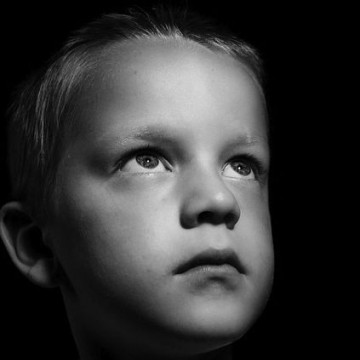Senator Ron Wyden: Protecting Children from Abuse and Neglect – An Oregon Perspective
Thursday, February 26, 2015

And yet, the sad truth remains that too many children in Oregon and across the country are dying from abuse and neglect despite hard work to prevent those tragedies and efforts to understand why they happen.
That reality will be in the forefront in Portland this week when a federal Commission to Eliminate Child Abuse and Neglect Fatalities meets to hear ideas from local, state and federal officials for better protecting our kids.
The Commission was created after Congress passed the Protect Our Kids Act of 2012 to bring new perspective, insight and tools for preventing abuse and neglect. That work will form the basis for a report to be submitted to the President and Congress detailing specific recommendations for strategies to better protecting children from abuse and neglect.
To achieve those goals we must identify which children are most at risk. In 2013, 10 children died in Oregon from abuse or neglect. Seven of these children were 5 years old or younger; five were younger than 1 year old. No child was in child protective services (CPS) custody at the time of death, and there were no children who had a referral to CPS within the last year. Several common risk factors were identified in these fatalities, including drug use by adults.
So how do we ensure the safety and well-being of our most vulnerable children and what is the appropriate role of the child welfare “system”?
The answer lies in identifying at-risk children earlier, engaging families, and using a multidisciplinary approach. Increasingly, experts understand there is a much larger community of agencies, beyond CPS, that know about a child’s risk for abuse and neglect. Law enforcement, domestic violence services, mental health professionals, primary care and emergency room physicians, the judiciary, teachers and school counselors—each can potentially signal early warnings of children at risk.
Effectively preventing fatalities requires a broader, more coordinated response across the social service system. We need to build bridges across systems and create a comprehensive child welfare system that is more than just CPS. The goal is to have a fully collaborative approach that provides the earliest possible warning and most effective response.
That’s what we’re doing in Oregon - working hard to bring a multidisciplinary approach to how we collect data on fatalities and improving our process in understanding it so decisions are made faster and reaction is more focused and effective. Oregon’s State Child Fatality Review Team includes a wide variety of partners, including CPS, public health, law enforcement, physicians, district attorneys, medical examiners, paramedics, and community health nurses, to name a few.
In addition to co-chairing the State Child Fatality Review Team twice per year, the Oregon Department of Human Services and the Oregon Health Authority also work together to implement prevention strategies throughout the year. In 2014, this heightened partnership fostered the implementation of an existing federal child fatality electronic data system that improves child fatalities data collection with the goal of improving prevention and intervention.
As part of Medicaid, the state/federal health care program for low-income people, Oregon has established a system of Coordinated Care Organizations (CCOs), which integrate physical, mental and behavioral health. Oregon’s CCOs are working to align services across systems in order to address the long-term health of children and families.
Another important advance is the Oregon Safety Model (OSM) used by CPS. This model requires a more than an investigation of an incident, it requires a comprehensive assessment in every case to ensure child safety at all stages of a family’s involvement with CPS. The program is driven by a belief that we all embrace - safety is a fundamental right of every child in Oregon.
That belief was the catalyst in 2008 for Karly’s Law, named after a 3-year-old girl who died from abuse despite multiple investigations of abuse allegations conducted by state child welfare staff and law enforcement, and despite significant physical evidence. The law mandates that children with suspicious injuries receive medical attention from a designated child abuse medical professional within 48 hours. Since 2008, Karly’s Law has helped thousands of Oregon children receive medical evaluations and care related to suspected abuse.
Parents are part of the effort too. Programs that offer advice on best practices in parenting are promoted statewide with community partners such as Circle of Security, Healthy Start-Healthy Families, Nurse-Family Partnership of Oregon and others. All of them provide curriculum and home visitation programs, relief nurseries and other services that help parents develop the skills and supports they need to adequately care for their children. These programs are showing particular promise and just last week, Oregon received $10.8 million in federal grant funding to expand evidence-based home visiting services to women during pregnancy and to parents with young children, a program made possible by the Affordable Care Act.
All of these steps, including improved data tracking, identification of at-risk children, development of prevention strategies, implementation of trauma-informed care, replication of best practices, coordination across multiple agencies and targeted investments, can help us fulfill our most important responsibility—protecting vulnerable children from abuse and neglect.
Related Articles
- Senator Wyden Talks Oregon Priorities With Interior Secretary Sally Jewell
- Senators Wyden and Merkley Call for Resolution in Port Labor Dispute
- Wyden Asks FAA to Stop Foot-Dragging on Drone Regulations
- Wyden Supports Release of CIA Torture Report




 Delivered Free Every
Delivered Free Every
Follow us on Pinterest Google + Facebook Twitter See It Read It